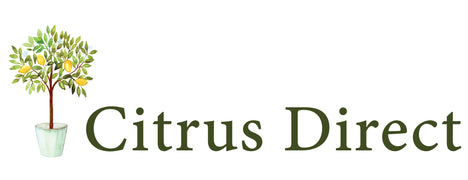Leaf-Roller Caterpillars - Types, Damage Signs, and Control Strategies
Feb 22, 2025
Leaf-roller caterpillars can cause extensive damage to leaves, shoots, buds, and the fruit of citrus trees. There are many varieties of leaf-rollers caterpillars in NZ which attack citrus trees.
Most Common Leaf Roller caterpillars:
- Light Brown Apple Moth (LBAM): This is the most widespread and damaging leaf-roller in New Zealand. In addition to citrus, it can infest a wide range of plants, including apples, pears, and grapes.
- Brown-headed Leaf-roller: This leaf-roller is also found on a variety of plants, including citrus, kiwifruit, and cherries.
- Green-headed Leaf-roller: less common than the other two species.
Damage Signs
- Leaf damage: Leaf-rollers feed on the leaves of citrus trees, causing the leaves to roll, wilt and brown. This can reduce the tree's ability to photosynthesise and lead to stunted growth.
- Defoliation: Severe infestations can lead to significant defoliation, weakening the tree and affecting its growth.
- Fruit damage: Leaf-rollers can also damage fruit by feeding on it directly or by tunnelling into it. Feeding on young fruit can result in scars and deformities which damage the fruit.
- Twig damage: Leaf-rollers can damage twigs by feeding on them or by webbing them together. This can weaken the branches and make them more susceptible to breakage.

Photo: Damage to leaves caused by a leaf roller caterpillar.
http://www.TeAra.govt.nz/en/photograph/17976/brownheaded-leafroller-caterpillar
Control Strategies:
- Monitor: Regularly inspect trees for signs of leafroller damage. Monitor trees regularly for signs of leafroller activity, especially during the growing season. Act quickly at the first signs of infestation to prevent larger outbreaks.
- Tree Health Maintenance: Keep trees healthy through proper watering, fertilisation, and pruning to reduce stress and susceptibility to pests. Remove dead or diseased branches, dead leaves, fruit and weeds near citrus trees. This will reduce living places for leaf rollers.
- Encourage Natural Predators: Promote a habitat for birds and beneficial insects through the planting of beneficial plants. Birds and insects such as parasitic wasps and Tachinid Flies can help control leafroller populations.
- Hand Removal: If infestations are small, manually removing the larvae and rolled leaves can be effective.
- Use organic insecticides: Products based on Bacillus thuringiensis or neem oil can be effective against leaf-rollers. These products are less harmful to beneficial insects and have a lower environmental impact. Spray the leaves thoroughly every 2-3 weeks December-April.
- Insecticides: If infestations are severe, consider using insecticides specifically labelled for leaf-rollers. Follow the manufacturer's instructions carefully to minimise the impact on beneficial insects and ensure safety.




